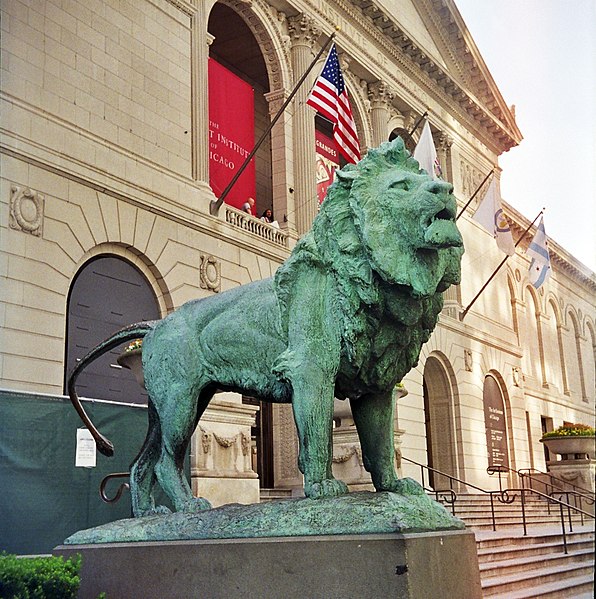
For us, it will be a leisurely "Black Friday" in the city. This afternoon, a stroll through downtown to take advantage of sunny and pleasantly mild weather.
Along the way we'll visit the Art Institute of Chicago, to see the the famous two lions in their newly-donned holiday garb. Tonight: the Tony-winning Broadway Musical "Memphis"! Come back this weekend for reviews of this show, and of the new film "The Descendants".
Read on for more about the lions, and their artist, Edward L. Kemeys.
* * * * *
Two of the undisputed landmarks of the City of Chicago are the sculptured bronze lions that stand guard on either side of the main entrance at the Art Institute. They are a favorite photographic subject of tourists, and delight children of all ages who visit the Museum for their first time, or their hundredth. The lions also serve as unofficial mascots for the Chicago professional sports teams when they make the championships, and can be seen wearing Chicago Bears or Blackhawks helmets in support.
Today, the Holiday season becomes official with the ceremonial "wreathing of the lions":

Less well-known to Chicagoans is the sculptor who carved these lions, Edward Kemeys (1843-1907). Kemeys was born in Savannah Georgia, and studied art in New York and Paris. As a boy he delighted in his visits to the prairies of Illinois, and marveled at the animals he observed at New York's Central Park Zoo. He became famous for his uniquely Western style of art, and for his sculptures of animals. The bronze lions, completed in 1893, are his most famous.
Kemeys unofficially named the lions: the south lion is "stands in an attitude of defiance," and the north lion is "on the prowl."
 |
| South Lion: "Stands in an Attitide of Defiance" |
 |
| North Lion: "On the Prowl" |

No comments:
Post a Comment